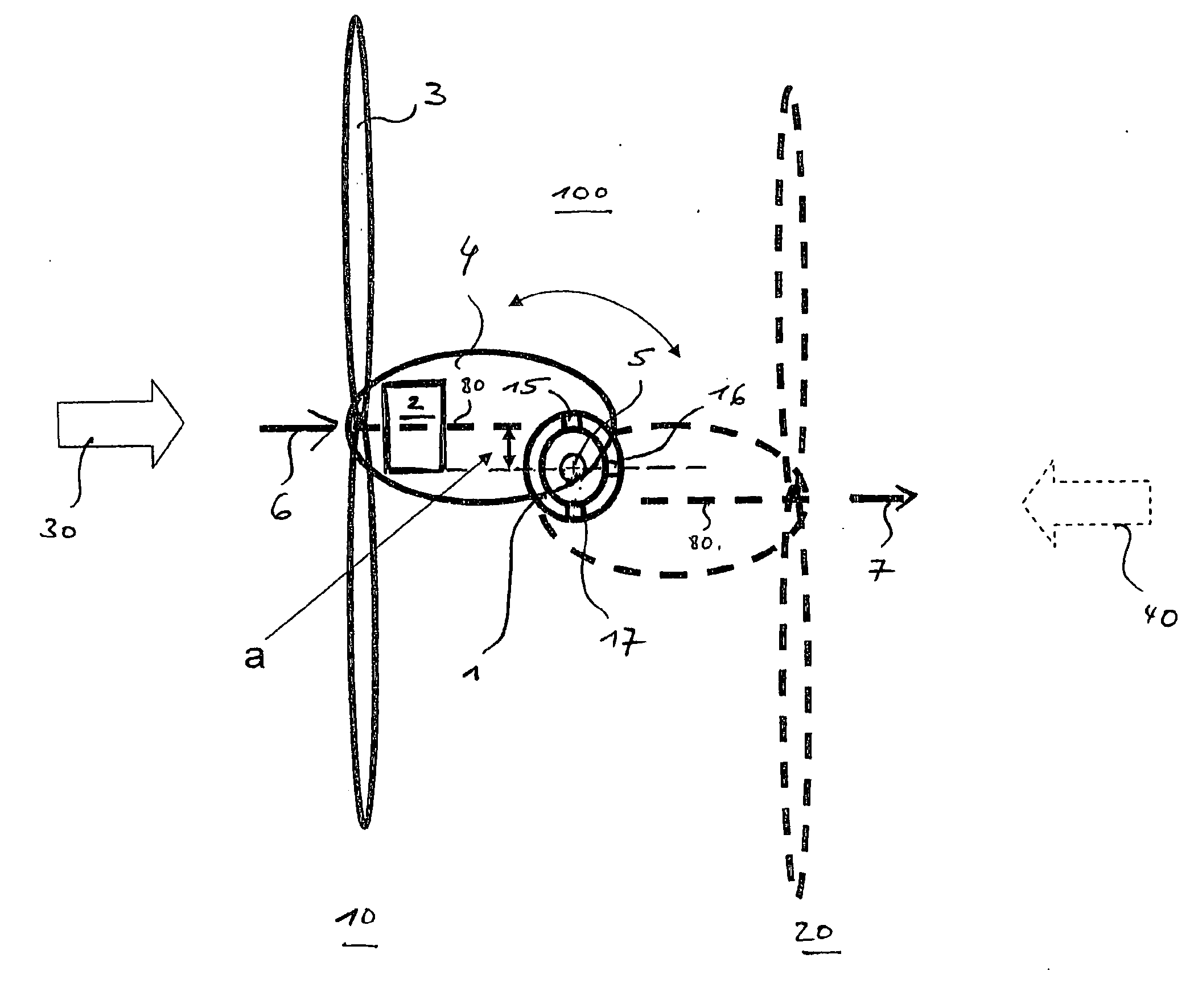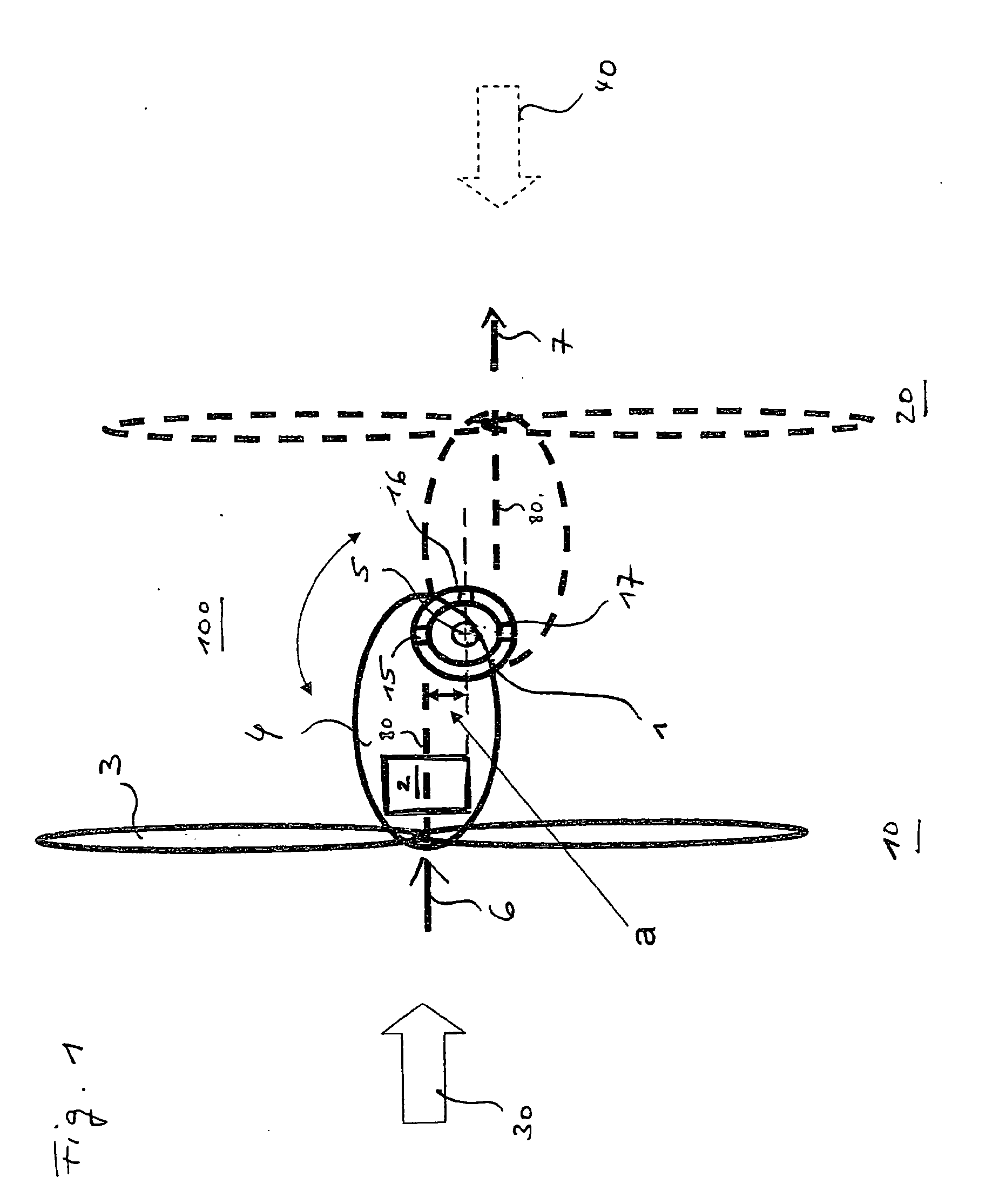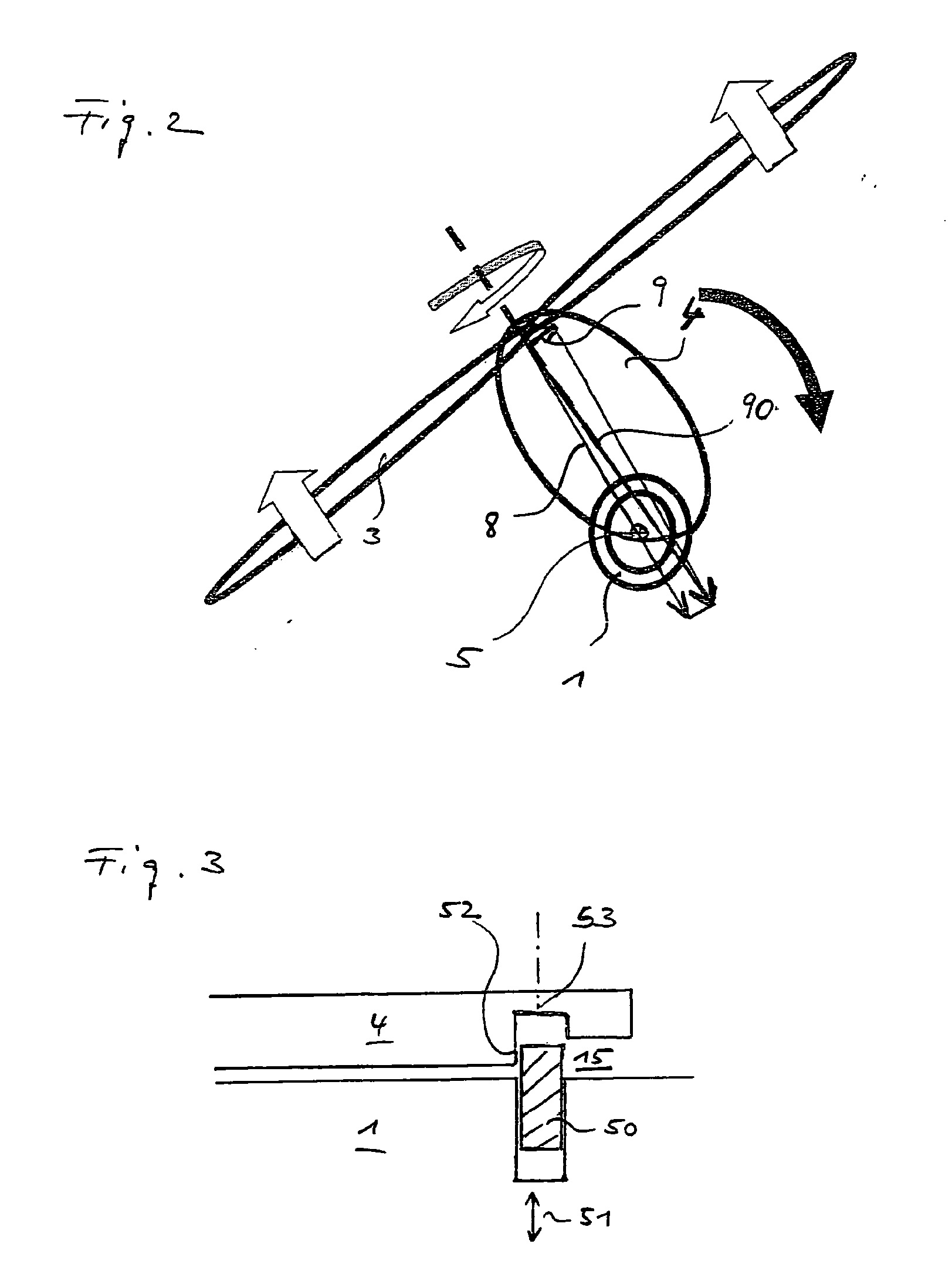Underwater power station and method for operating an underwater power station
a power station and underwater technology, applied in the direction of mechanical equipment, electric generator control, machines/engines, etc., can solve the problems of not being able to avoid certain shading effects of the support structure (tower shadow), unable to make any passive readjustment with a changeable inflow direction of current-side runners, etc., to achieve efficient and effective operation of underwater power stations
- Summary
- Abstract
- Description
- Claims
- Application Information
AI Technical Summary
Benefits of technology
Problems solved by technology
Method used
Image
Examples
Embodiment Construction
[0036]Referring now to the drawings, and more particularly to FIG. 4, there is shown a generic, free-standing underwater power station in a schematic simplified view, including support structure 1 in the form of a support pillar and a foundation anchored to floor 60 of the ocean. Support structures 1 can also be arranged in a different way for the present application, e.g. as support grating structures or as anchored floating units, insofar as they are suitable to support pivoting turbine 3 with a certain distance from a linkage point.
[0037]FIG. 4 further illustrates first inflow direction 30 for turbine 3. Opposite of first inflow direction 30 there is a unit of turbine 3 and spacer element 4 for the illustrated operational situation in the, for example, current-side position for generator operation of the underwater power station.
[0038]A rotor-like structure with two propeller blades is shown in FIG. 4 as turbine 3. It is connected, for example, in a rigid manner with a rotor hub....
PUM
 Login to View More
Login to View More Abstract
Description
Claims
Application Information
 Login to View More
Login to View More - R&D
- Intellectual Property
- Life Sciences
- Materials
- Tech Scout
- Unparalleled Data Quality
- Higher Quality Content
- 60% Fewer Hallucinations
Browse by: Latest US Patents, China's latest patents, Technical Efficacy Thesaurus, Application Domain, Technology Topic, Popular Technical Reports.
© 2025 PatSnap. All rights reserved.Legal|Privacy policy|Modern Slavery Act Transparency Statement|Sitemap|About US| Contact US: help@patsnap.com



